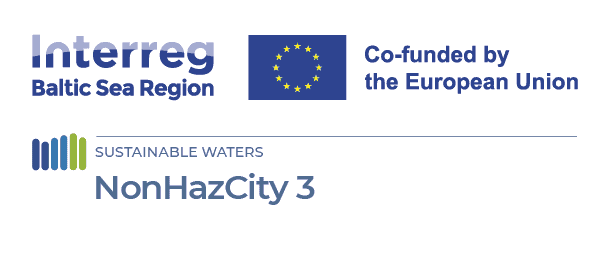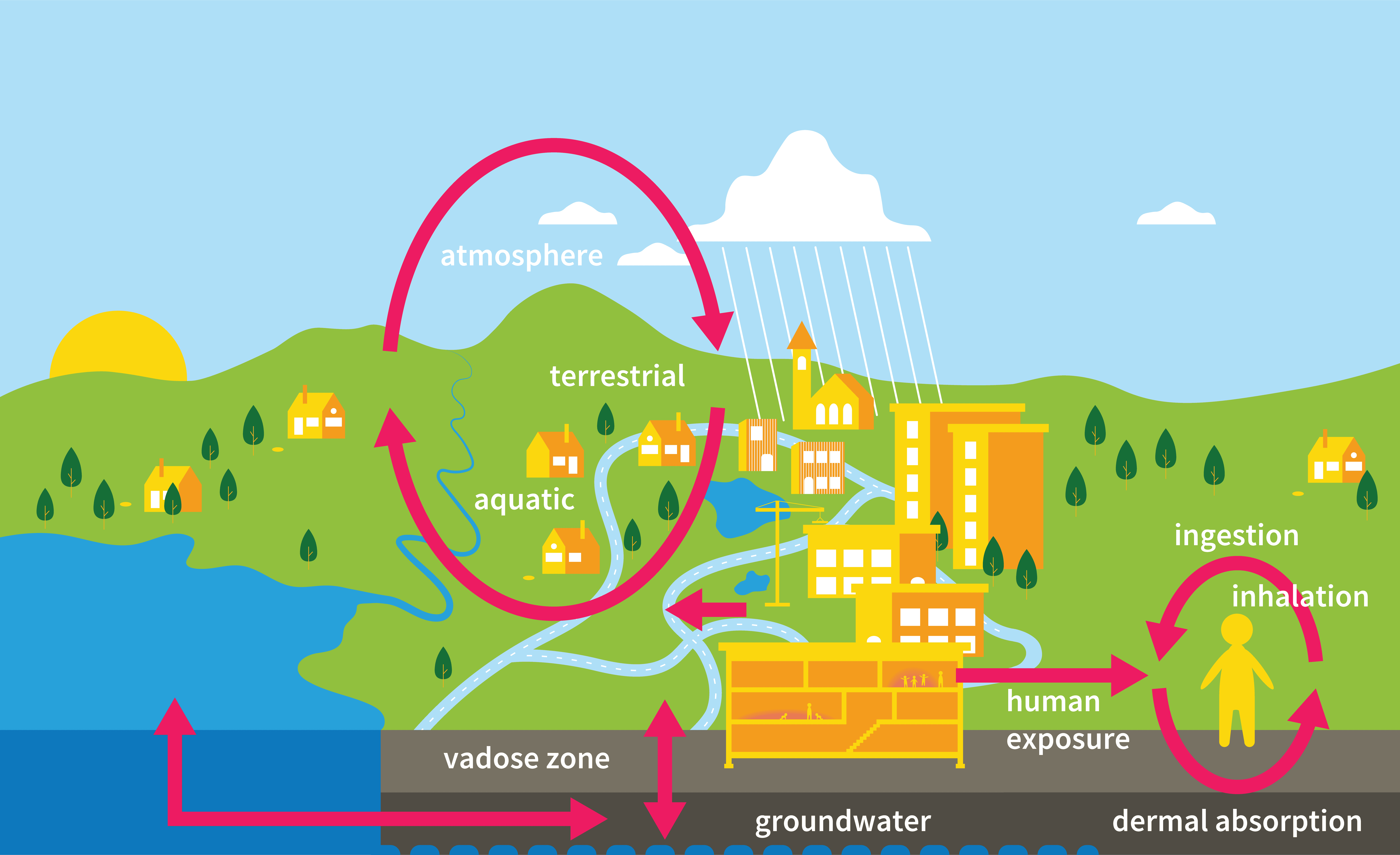
Understanding Hazardous Substances in Urban Environments: Insights from the NonHazCity 3 Screening Activities
30 June 2024
The NonHazCity 3 project works towards changing the fact that hazardous substances sneak into our buildings and neighbouring matrices. The screening activities conducted within this project give insights to where further, more extensive screening and research activities are needed to be able to eventually eliminate the risks and create safer, healthier urban spaces.
The Scope of the Screening Investigations
The NonHazCity 3 project focused on five cities in the Baltic Sea Region: Tallinn, Helsinki, Turku, Västerås, and Stockholm. The aim was to get a better understanding of how building materials contribute to contamination in both outdoor and indoor environments. To achieve this, the team conducted targeted pollutant screenings across five matrices: construction materials, stormwater, indoor dust and air, and residential wastewater. Although not all matrices were screened in each location, significant findings emerged that shed light on the presence and sources of hazardous substances.
The investigation identified several groups of hazardous substances commonly found in building materials:
- Phthalates: Used to make plastics flexible, found in PVC flooring, cables, roofing membranes, and plastic films on metal roofs. They disrupt hormones in living organisms.
- PFAS: Extremely persistent and pose significant long-term health risks, used for their resistance to heat, water, and oil.
- Bisphenols: Endocrine disruptors used in plastics.
- Organophosphate Esters (OPEs): Used as flame retardants and plasticizers, linked to adverse health effects.
- Brominated Flame Retardants (BFRs): Persist in the environment and can cause neurological and hormonal issues.
- Biocides: Used to prevent mold and fungal growth, contributing to biocide resistance.
- Chlorinated Paraffins (CPs): Persist in the environment, bioaccumulate, and may be carcinogenic.
- Volatile Organic Compounds (VOCs): Found in paints, solvents, and adhesives, causing various health issues.
- Metals: Lead, cadmium, mercury, zinc, and copper are toxic even in trace amounts and are found in construction materials.
Key Findings
Indoor Dust
Indoor dust samples revealed to mirror construction materials in terms of substances found within them. Even though many substances have been regulated and are no longer found in dust samples in high quantities, organic pollutants, including plasticizers, PFAS, and chlorinated paraffins are still detectable. Higher concentrations of hazardous substances were found in houses with PVC flooring and treated surfaces.
Stormwater
Stormwater acts as a conduit for pollutants between the built and natural environments. The samples collected contained a variety of contaminants such as biocides, organophosphate esters, metals, and PFAS. The levels of contamination varied across different cities and building types, with biocides like diuron, propiconazole, and mecoprop being particularly prevalent in areas with new wooden claddings.
PFAS
PFAS were detected across various matrices, with significant concentration variations among the cities. These substances are used in many applications due to their resistance to heat, water, and oil, but they are extremely persistent in the environment and pose long-term health risks.
TCPP Contamination
Widespread contamination by TCPP was found in stormwater runoff, wastewater, and indoor dust. This highlights the pervasive nature of this pollutant.
Emerging Substances
The study also noted the replacement of older contaminants with emerging substances of concern in building materials. This trend underscores the need for ongoing research to fully understand their impacts.
Recommendations for a Safer Urban Environment
- For Regulators: Implement stricter regulations on hazardous substances in construction materials and encourage the development and use of safer alternatives.
- For Public Authorities: Ensure compliance with existing regulations, enhance monitoring systems to detect new harmful substances, and raise awareness of the risks associated with hazardous substances. Promote safer alternatives and improve waste management to ensure recycled materials are hazard-free. Collaborate with city/district development departments to prevent the use of hazardous substances through procurement.
- For Constructors: Avoid using materials treated with harmful chemicals, require suppliers to declare all content of substances of concern, and evaluate and substitute the most harmful chemicals with safer alternatives. Enhance waste management practices to ensure recycled materials are free from hazardous substances.
Conclusion
The findings of the NonHazCity 3 project underscore the critical need for continued monitoring, stricter regulations, and the promotion of safer materials to reduce hazardous substance levels and mitigate health risks. By following these recommendations, cities in the Baltic Sea Region—and beyond—can protect their environments and create safer urban spaces for their inhabitants.
Collaboration between cities and countries is essential for sharing information and best practices. Joint initiatives can help tackle pollution from construction materials, ultimately improving both environmental and public health. Let’s work together to make our cities safer and healthier for everyone.






